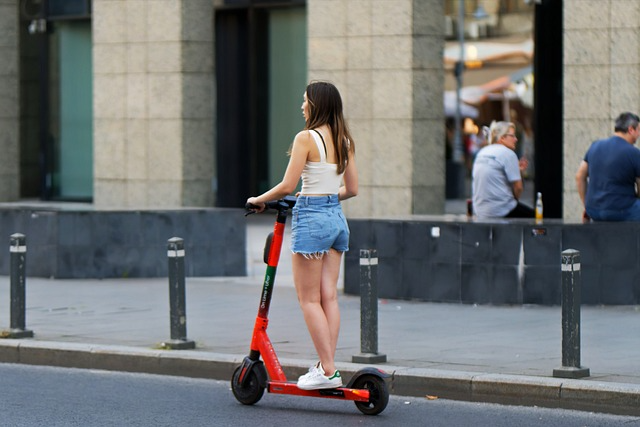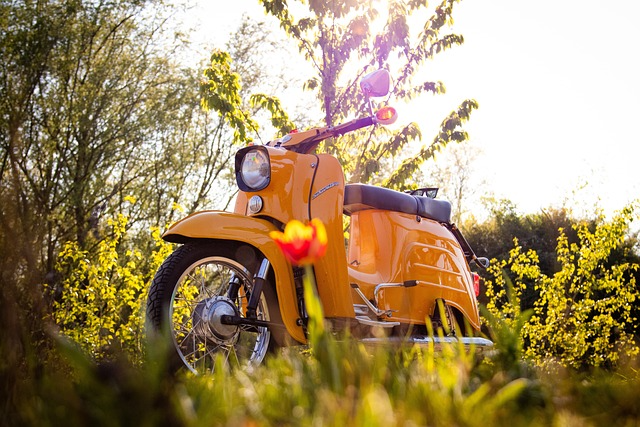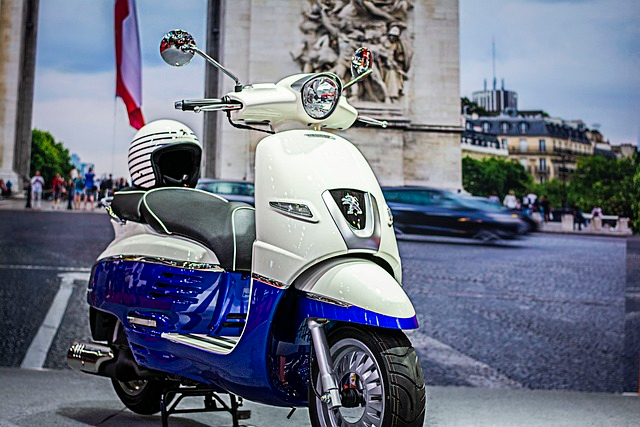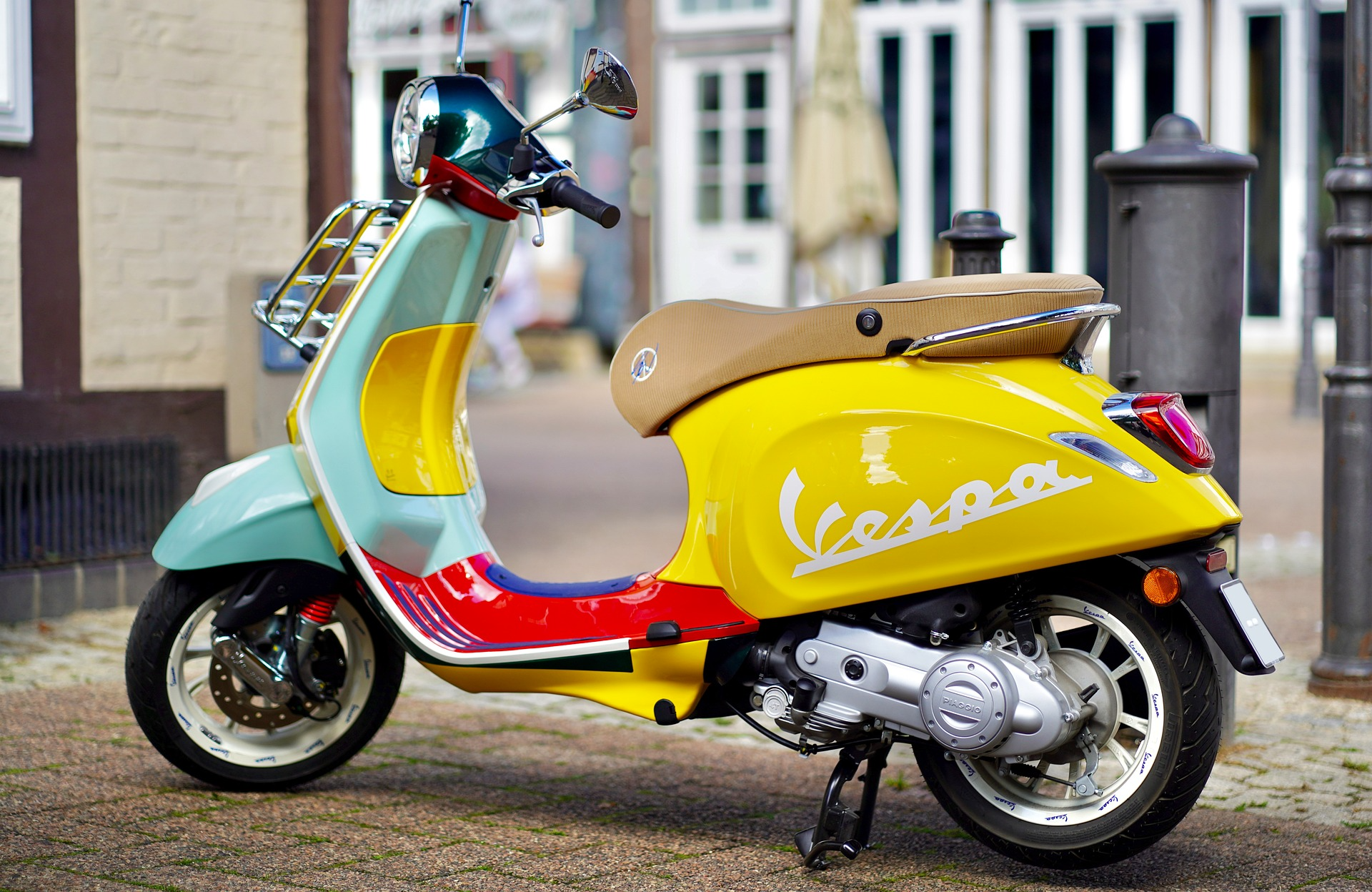Hawaii is a paradise for beach lovers and those who want to dive deep into nature. Having visited Hawaii several times, the best way to go around here is probably a scooter. It gives you the ease to travel anywhere anytime and without any restriction. It’s way more affordable compared to other transportation options. If you know how to ride one, you’ll definitely enjoy exploring the island at your own pace.
However, there’s a catch. You simply can’t ride around on a scooter. You need to adhere to the Hawaiian traffic laws. And, for that, you do need to know the ins and outs of the scooter laws. To make things easier for you, we’ve mentioned everything in this article so you can dodge any fines and problems that come your way while riding on the Hawaiian islands.
Now, coming to the Hawaii laws, Hawaii just revised its laws regarding scooters for electric scooters (e-scooters) and mopeds. This article summarizes Hawaii scooter laws, e-scooters, mopeds, and motor scooters, safety regulations, and penalties for traffic law violations.
Electric Scooter Laws

Electric scooters are those scooters that can be ridden by standing on foot. It is a standing vehicle with a platform allowing the operator to stand and operate the vehicle. Laws for these scooters are quite different than other gas scooters.
Legal Framework
Electric scooters shall be registered for the one-time cost of $30, payable to the director of finance. This fee is deposited in the bikeway fund, which is used to enhance cycling infrastructure, such as bikeways, storm inlets, and bridges.
These electric motorized scooters can be ridden on bike lanes, walkways, streets, highways, roadways, or publicly accessible locations.
In 2021, Hawaii enacted House Bill 72 (HB-72) that legalized e-scooters on public roads. This was a big change from previous laws that classified e-scooters as mopeds which required licensing and registration. Under the new law:
Age Restrictions: Age less than 15 are not permitted to ride e-scooters on public property. Under 16s have to wear a helmet with a chinstrap when they ride.
Single Rider Rule: E-scooters are single riders only, for safety and control. More than one riding the scooter is prohibited.
Helmet Laws: Anyone under the age of 16 must wear a bicycle helmet. If you are renting one from any rental company in Hawaii, you are supposed to get helmets with your ride.
Hands-Free Operation: You are not allowed to wear anything that would hinder you from using both hands to control the scooter.
Limits and Requirements: Electric scooters shall not weigh more than 50 lb and have a maximum speed of 15 mph. For nighttime use, the electric scooter requires front and rear lights and reflectors.
Local Regulations
Counties in Hawaii can add additional rules for e-scooters. This includes:
- Speed limits
- Safe operation guidelines
- Storage and docking requirements
- Insurance requirements for rental companies
- These local regulations aim at the enhancement of safety of e-scooter riding and other road users.
Safety Tips
To avoid accidents you need to follow a few instructions to be safe on the road:
- Wear bright clothes
- Follow traffic laws
- Pay attention when sharing the road with motor vehicles for potential blind spots.
Moped Laws

Coming to the moped laws in Hawaii, the definitions of “moped,” and “motor scooter” are defined in Hawaii Revised Statutes (HRS) 286-2 and HRS 291C-1. These vehicles are classified according to design, engine power, and operability. These groupings are used in describing the legal status for operating and regulating each category of vehicle.
Mopeds in Hawaii are two-wheeled or three-wheeled with 49cc and under. To ride a moped:
- You must be 15 years old.
- If renting a moped, you should be 18 years old. A driver’s license is required.
- You must have a valid driver’s license.
- Mopeds are single riders only.
License Requirements
To drive a moped, you’ll need a driver’s license and a motorcycle instruction permit. Any kind of license will work, but if there isn’t and you are planning to ride a moped only, you can get a Class 1 license. This license is exclusively for moped riders and involves passing a written and practical driving test.
If you’re under 18, you’ll also need to complete driver education requirements. At 15 and a half years of age, you are eligible to apply for a permit. With an out-of-state license, the moped can be driven, but only if the driver is at least 18 years old.
Registration and Insurance
The state registration is required for mopeds and there is a registration fee. The initial moped registration costs $32.50.
While private mopeds do not require insurance, rental mopeds must be insured. For safety, we would recommend everyone to at least get liability insurance in case of any foreseen events.
Rental companies are obliged to provide you with any moped safety flags and helmets during rental if you do not have a motorcycle license.
Parking Requirements
Even seemingly straightforward moped parking is not always (easy) because of the law. Here are some pointers you need to take care of while parking your moped:
- Always make sure to lock it up when you leave it, as mopeds are small and lightweight, making them a tempting target for thieves.
- Even though it may appear as a means to deter theft, securing your moped to a sturdy bike rack is sometimes not possible or permitted.
- There are on-street parking stalls around the streets of Hawaii. Always park at the designated parking stalls specifically.
- There are a lot of rules for where and how you can park, so it is worth seeing what is allowed before even getting on a ride.
Safety Requirement
A recent new law mandates that all rental mopeds must have a safety flag no lower than 5 ft. above the ground. The flag shall be fluorescent orange in shape and triangle. There are other unsaid rules as well that you should follow:
- It’s not a compulsion to wear a helmet, but you very much should do so. A helmet can help shield your face and your head.
- Full-face helmet provides the maximum coverage, and adding to this is a screen that allows you to be much more comfortable, by acting as a barrier from the wind, insects, dirt, and rain.
- It is also a smart idea to wear eye protection, full-fingered gloves, a long-sleeved shirt and pants, and strong shoes up to your ankles to further protect against injury.
- When riding, you must sit on the seat, face forward, and have one leg on each side of the moped.
- If you’re driving a moped slower than the normal flow of traffic, you must stay as close to the right side of the road as possible.
- If you’re on a one-way street with multiple lanes, it’s safer to ride closer to the left side.
Violations, Responsibility, and Jurisdiction
a) It is illegal for an individual to engage in behavior that is prohibited by the law.
(b) If anyone under the age of 15 is seen to drive a moped dangerously or when breaking a rule, their parent or guardian will be made responsible for any damages or penalty incurred and shall be jointly and severally liable with the child.
(c) These guidelines also apply to all people riding a moped on any public road or property controlled by a state or local government.
(d) You cannot legally ride a moped unless you have a valid driver’s license.
(e) If a police officer asks, you must show them your driver’s license or learner’s permit, or else you’ll have to face penalties.
(f) Mopeds and motorcycles must have a working muffler to reduce noise. It’s illegal to modify the exhaust to make it louder. Mopeds with excessive or unusual noise will have to pay a fine
(g) You can’t drink alcohol while riding a moped or driving any vehicle on public roads. You also can’t have any open containers of alcohol or partially consumed bottles while riding or driving. If you break this law, you could face fines of up to $2,000, jail time for up to 30 days or both.
Motor Scooter Laws

According to the definition by law, a motor scooter is a vehicle with a handlebar and seat that enables an operator to sit down and ride. It is in two wheels or three wheels but quite distinct from larger vehicles. The motor of these vehicles only outputs a max of 5 hp and is way different from a moped.
Licensing & Insurance Requirements
If you’re operating motor vehicle, you should know everything about the licensing requirements. For the users of motor scooters, a valid motorcycle license (Type 2 license) is needed.
Licensing criteria as described in HRS 286-102 ensure that you attain certain safety and competency requirements before getting on the road.
In addition to the license, Hawaii law requires all motorcycle and motor scooter motor vehicle operators to have liability insurance for their motorcycles and motor vehicles. Also, you must carry with you at all times, both a current identification card and driver’s license.
Riding Requirements
One important aspect of motorcycle and scooter operation in Hawaii is the prohibition of lane splitting or lane sharing.
Lane splitting, which refers to riding between marked traffic lanes of traffic moving in the same direction, is illegal in Hawaii. This regulation is focused on safety by minimizing collisions and confusion among drivers, which helps create a safer road environment for everybody.
These statutes reflect Hawaii’s commitment to maintaining road safety while providing clear guidance for operators of mopeds, motorcycles, and motorscooters.
Motor scooters are classified differently than mopeds. They have larger engines (over 50cc) and require:
- Motorcycle license to ride.
- To rent or ride a motor scooter, one must be at least 21 years old.
- Always wear rider safety equipment to be safe while riding.
Riders should be acquainted with these rules to remain in compliance and to have a safe and legal riding experience on the islands.
Operating Conditions
Motor scooters can be driven on the road, but they are required to comply with traffic laws. In contrast to mopeds, they can carry 2 passengers, however, both passengers must additionally wear a helmet when they are below certain age limits.
General Traffic Regulations for Motor Scooters
Scooter operators in Hawaii are afforded the same rights and obligations as drivers of motor vehicles. This means that they are required to, amongst other things, obey traffic lights, give priority to people crossing, and drive at a safe speed based on local regulations.
Prohibitions
- Lane splitting or sharing is illegal.
- Passengers under 7 years old are not permitted to be carried unless exceptional circumstances are encountered (e.g., using a 3-wheeled device and restraint).
Penalties for Violations
Violating scooter laws can result in fines. For example:
- Riding a motor scooter recklessly can be fined.
- Improper loading of passengers or lack of helmets can also be penalized by a maximum fine of $200 for some violations relating to young passengers.
- Not parking the vehicles in the designated parking spaces can also lead to penalties.
Conclusion
Hawaii’s scooter laws offer a more structured approach to the growing popularity of electric scooters, mopeds, and motor scooters on the islands. By adhering to these regulations you can enjoy the freedom of exploring Hawaii safely and legally. So, as you prepare for your next adventure on two wheels, remember to stay informed, ride responsibly, and stay safe!
Frequently Asked Questions
Do I need a license to ride a scooter in Hawaii?
Yes, in Hawaii, you need a valid motorcycle license or permit to ride a scooter with an engine size greater than 50cc. For scooters under 50cc, you may only need a regular driver’s license.
Can I park my scooter anywhere in Hawaii?
Scooters must be parked in designated motorcycle parking spaces. They cannot be parked on sidewalks, and parking in regular car spaces may result in fines. Always check local parking rules to avoid penalties.
Can I rent a scooter in Hawaii?
Yes, many rental companies allow tourists and residents to rent scooters. You will need to provide a valid driver’s license or motorcycle endorsement depending on the scooter’s engine size.

